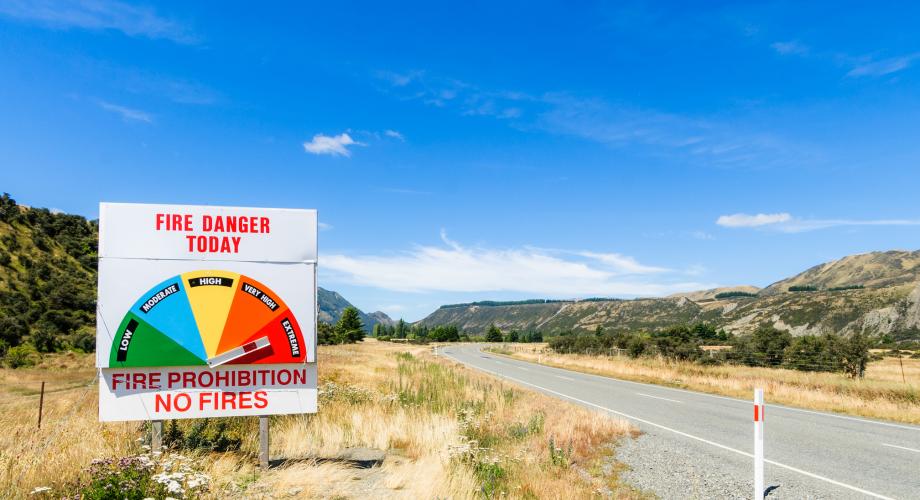May is National Wildfire Month, and there are several actions that can be taken at minimal expense to significantly reduce the losses associated with wildfires.
With the challenges associated with climate change, decades of improper wildland fire management and the lack of sufficient firefighting resources, the number and intensity of wildfires across the nation is increasing. The decision to buy, build or manage multifamily housing within the urban-wildland interface must include a recognition and an evaluation of the risks involved as well as the willingness and ability to incorporate effective wildfire mitigation practices.
Fire mitigation is defined as reducing the risk of property loss, personal injury or death from fire. While the goal is to eliminate these risks through mitigation, it is simply not practical to make properties or lives completely free from the risks associated with fire.
The fact is, like most things, we are seeking reasonableness. Fortunately, when it comes to protecting apartment communities, there are several things that can be done at minimal expense to significantly lower the losses from fire. Most structures ignite during a wildfire because of airborne embers, which are burning pieces of combustibles (such as wood, leaves, vegetation and the like). Wildfire mitigation is focused on reducing the risk of ignition from embers.
Fire Mitigation Best Practices
Experience shows that the chances of a property igniting during a wildfire are directly related to the condition of the property and the surrounding areas. The most basic mitigation practice is to remove any combustible materials that are located near the structure. This includes not only vegetation but also trash, debris, firewood and other combustible building materials.
The very first line of defense is simply good housekeeping. This includes keeping roofs and gutters free from dead leaves and other vegetation such as pine needles, as well as keeping the branches of trees at least 10 feet away from the edge of the building or structure.
Establish a Protective Barrier
The most effective means of mitigating the risk to an apartment community is to create a buffer around the building. Pay particular attention to the first 5 feet immediately surrounding the building. The strategy is to keep this area free of combustibles that can be ignited by embers and spread to structures. Work to ensure that combustible debris and dead plant material do not accumulate in these areas. Where possible, it is best to use landscape such as gravel, pavers or non-combustible mulch materials in this 5-foot zone. However, the planting of wildfire-resistive vegetation will also keep risk low.
In addition to clearing ignitable materials, apartment owners and operators must consider the condition of the structure. Missing or loose shingles should be replaced along with covering vents with metal mesh screens. Damaged windows and screens also should be repaired or replaced. Additionally, be sure to clean and protect areas below any decks or patios. Where feasible, it is a good idea to box in these areas or install screens to keep combustible materials from accumulating.
Owners and operators should also consider the condition of the roofs. If you have a roof that is not rated against fire, when it is time to reroof, use a Class A-rated roofing material. Nearly all asphalt shingles on the market are Class A fire rated. Clay and concrete tile roofs are also Class A.
The areas outside the 5-foot zone are used to create fire breaks to mitigate a fire’s behavior. Mitigation efforts to consider in this zone include keeping lawns and other grasses to a maximum height of 4 inches, pruning trees to keep branches a minimum of 6 feet above the ground, space trees so that a minimum distance of 18 feet is maintained and keeping trees and shrubs in small clusters. Keep in mind that your uncovered patios, walkways and driveways can create effective fire breaks, as well. The focus in this extended zone is to use landscaping to interrupt the fire’s path and to keep the fire wall (flames) as small as possible.
Actions include removing all dead vegetation, including trees, remove combustible debris and garbage, remove young trees from between mature trees, and watch the spacing between mature trees. It is recommended that trees that are located from 30 feet to 60 feet way from buildings, have at least 12 feet between their canopy tops and for trees beyond 60 feet, maintain at least 6 feet of clearance. Do not neglect any outbuildings, such as storage sheds. Keeping these structures free from encroaching vegetation or combustible debris helps in keeping fires small and limiting the discharge of embers.
Steps to Take Right Now
• Keep tree branches away from the roofs of buildings.
• Remove all dead vegetation found within the immediate 5-foot zone.
• Do not allow combustible debris to accumulate against the buildings or under decks and patios.
• Keep lawns and grasses to a maximum height of 4 inches.
• Speak with your local fire department or the forest service to discuss the severity of the risk in the area where your communities are located.
• BE PREPARED. Involve everyone in the community when developing a plan for emergency action in the case of a wildfire.
Additional Resources
The National Fire Protection Association is the premier resource for fire safety, including wildfire mitigation. Visit nfpa.org and search for “public education” for a wealth of information. Other resources include the U.S. Fire Administration and the USDA Forest Service.
Russell Leavitt is the Executive Chairman of the fire protection, life safety and security company Telgian and is the First Vice Chair of the National Fire Protection Association (NFPA). Leavitt also is a senior instructor for NFPA, American Fire Sprinkler Association (AFSA) and Fire Smarts and has authored numerous industry training materials including “Fire Safety Codes and Standards: What You Need to Know,” “Understanding Fire Protection Classifications,” “International Fire Sprinkler Opportunity” and AFSA’s ITM Inspector Development Program.
